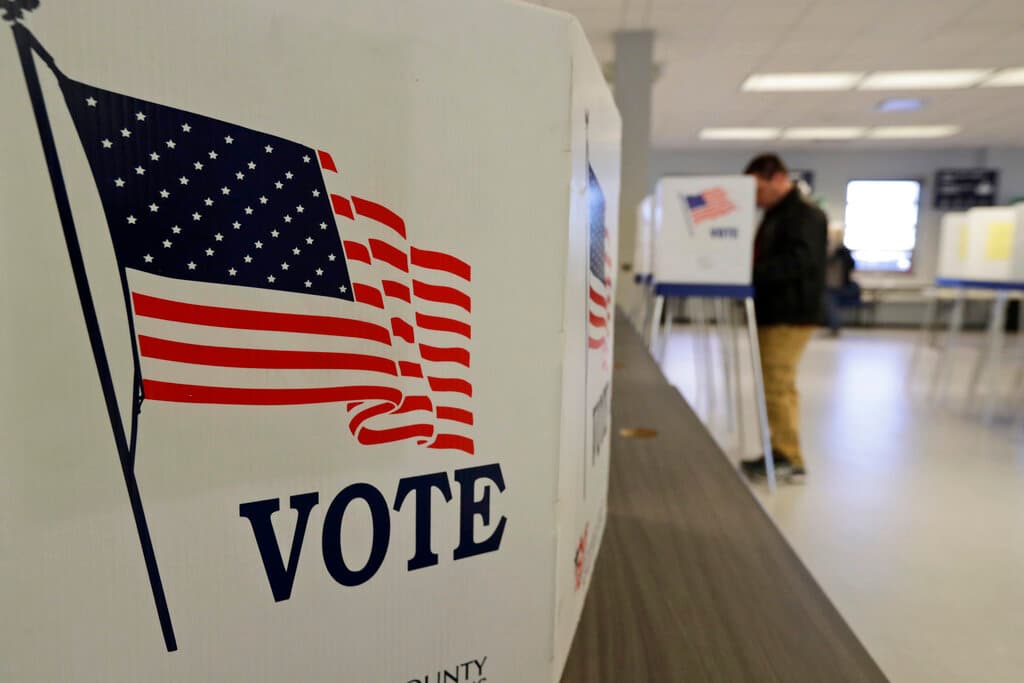New Political Analyses Paint a Bleak Picture for Democrats in November
The Cook Political Report and Larry Sabato’s ‘Crystal Ball’ both project that Republicans will retake control of the House. The only question is by how much.

Two well-known nonpartisan political prognosticators are out Wednesday with projections for the November election that paint a bleak picture for Democrats hoping to hold on to their majority in the House of Representatives.
Both the Cook Political Report, founded in 1984 as the National Political Review, and Larry Sabato’s closely watched “Crystal Ball” from the University of Virginia’s Center for Politics are projecting that Republicans will handily regain control of the House.
The only question, each group suggests, is by how much.
“Our main question about the House continues to be not whether Republicans will flip the House — although we would not completely shut the door on Democrats’ retaining control if the political environment improves markedly — but rather how big the Republicans’ eventual majority will be,” Mr. Sabato’s report concludes.
In their ratings changes, analysts for the Cook report shifted eight races for seats in the House in favor of the GOP. They include three — an open seat in North Carolina, and two held by incumbent Democrats, in New York and Indiana — previously listed as “likely” Democratic to the slightly more contested “leaning” Democratic column.
Three other seats currently held by Democrats, two in Nevada and one in Virginia, were changed from “leaning” Democratic to “toss ups” by the analysts at Cook, and two more — one in New Jersey and an open seat in New York — shifted from being “solid” Democratic to “leaning” that way.
“With these changes, there are 27 Democratic seats in Toss Up or worse, and that list is certain to grow longer when Florida and New Hampshire finalize their lines,” a Cook analyst, David Wasserman, writes, referring to redistricting efforts in those states. “By contrast, there are only 12 GOP-held seats in Toss Up or worse — all of which are due to redistricting, not atmospheric factors.”
Mr. Sabato — a dean of American political analysis — issued ratings changes for 11 House races in November, all of them in favor of Republicans.
Mr. Sabato moved five House races, in Arizona, Georgia, Illinois, Indiana, and New York, to “leaning” Democratic from “likely” Democratic. Four races that were marginally competitive for Republican candidates, in Michigan, North Carolina, Pennsylvania, and Texas, are now considered “safe” for the GOP incumbents.
Mr. Sabato switched one race in California, that of Democratic incumbent Julia Brownley in the 26th District, to just “leaning” Democratic from safely Democratic. The race for Congresswoman Suzie Lee’s Nevada seat in the House has turned into a toss-up from a “leaning” Democratic race, according to Mr. Sabato.
He notes that Democrats in South Texas, long a stronghold for the party, are facing unusual headwinds this year because of an apparent shift in Latino voting in favor of the Republicans. He said Democrats are in danger of losing one or more of the three districts in South Texas currently held by Democratic incumbents.
The ongoing redistricting efforts related to the 2020 Census have muddied the waters somewhat, Mr. Sabato’s report said, but if the current trends continue through Election Day, “210 seats [in the House] would be rated Safe, Likely, or Leans Republican, 198 would be rated Safe, Likely, or Leans Democratic, and 27 would be rated as Toss-ups.”

